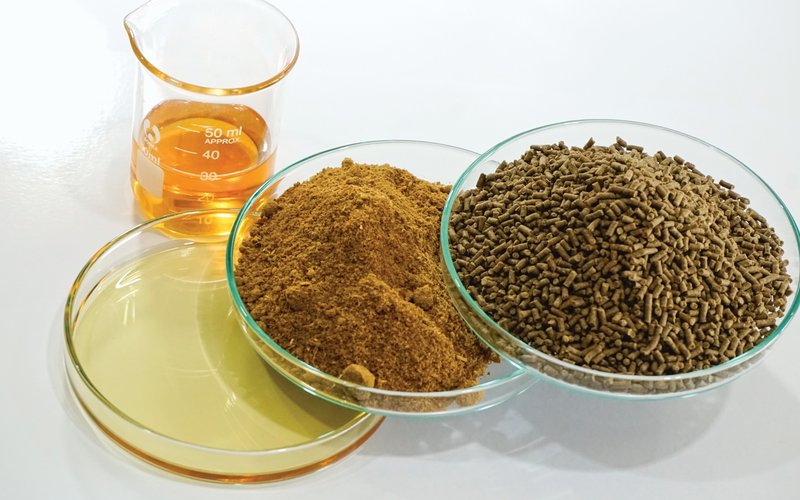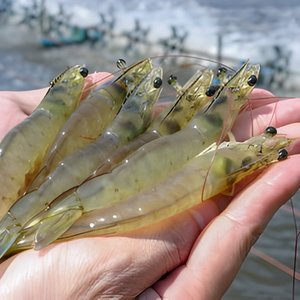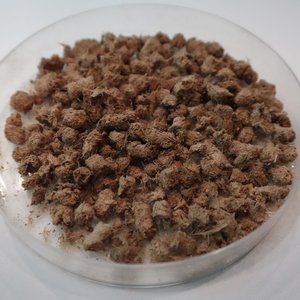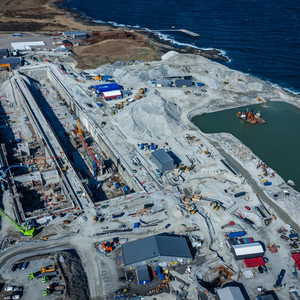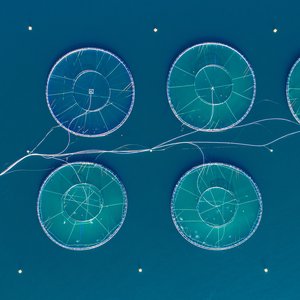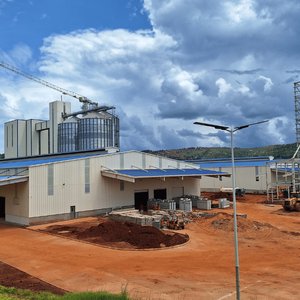The current situation of high fishmeal and fish oil prices and shortage presents a significant opportunity for the rapid scale-up of alternative ingredients.
“With demand rising for sustainable aquafeeds, alternative proteins such as plant-based sources, insect meal and single-cell proteins are gaining prominence. Plus, the cancellation can further motivate rapid innovation, attract investment and garner regulatory support for alternative ingredients. As consumers seek sustainable seafood, market acceptance of products fed with these ingredients is likely to grow. Collaborative efforts between industry stakeholders will expedite the adoption of these alternatives, enhancing the sustainability of aquaculture and reducing dependence on traditional fish-derived ingredients,” said Frederic Baron, aquaculture nutritionist creation design & development at ADM.
“There is undoubtedly an opportunity in the market for high-performance novel ingredients in aquafeed, and major producers clearly see the writing on the wall: current fishmeal production is maximized, demand for aquaculture species is rising, and there are few comparable proteins to fishmeal in terms of critical amino acids necessary for healthy growth and development that are economically feasible to produce at scale. This confluence of factors, in addition to likely continued moratoriums on key species harvesting in Peru and beyond, presents ideal conditions for rapid upscaling of valuable alternative proteins,” Alex Diana, product manager aquaculture at Innovafeed, said.
“The current uncertainty with respect to fishmeal due to El Niño is another wake-up call to the industry. Volatile weather conditions will affect traditional feed products which are dependent on the climate and impact companies’ ability to guarantee supply and ultimately price. The production of novel ingredients is not impacted by these factors and as such, it is attractive to customers and ultimately to investors,” Olivier Hartz, commercial development lead at Unibio, said.
How is the current adoption of novel ingredients?
“The current context of low fishmeal supply/high fishmeal prices goes hand-in-hand with an increase in the production of insect meal at scale. The black soldier fly industry is largely dependent on the adoption of this novel ingredient in pet food and aqua formulations. Pet food has been able to absorb most volumes produced up until now, but further scaling-up of the industry will require aqua formulators to follow the trend,” said Vincent Verhoestraete, sales director, Entobel.
Progress is being made in adopting novel ingredients but it takes time. “Recent reports from Nofima in Norway indicate that in 2020 just 0.4% of the salmon feed was made up of ingredients such as insect meal, single-cell protein, fermented products and microalgae. This proportion will have increased over more recent years because all feed manufacturers have published their targets to increase their utilization of alternative ingredients in aquafeed. For example, in their latest sustainability report, Skretting stated that they seek 5-10% of feed ingredients to come from alternative novel sources. In 2022, they achieved a total of 1% already,” said Ian Carr, global business development manager at Veramaris.
“Algae oils are currently the clear winner in the novel raw materials space. They are a viable alternative to fish oils and a valuable source of omega-3. However, the drive to extend the raw materials basket with enough novel, more sustainable proteins has only been partially successful. While there is a reduced reliance on marine proteins in aquaculture feeds, there is still a heavy reliance on soy proteins,” said Louise Buttle, Sustell lead for aqua and global key account manager, dsm-firmenich.
“We see the alternatives growing, and we see with great eyes new ideas and solutions. It will not be one OR the other; it will be one AND the other. Agility and collaboration are critical in developing solutions that generate a real impact for more sustainable food production,” said Ruud Peerbooms, president algae ingredients at Corbion.
“It may need to use a combination of conventional and alternative ingredients, as well as optimize the feed formulation and processing, to ensure the health and growth of the farmed fish. In the long term, the aquafeed industry may benefit from more research and innovation, as well as consumer awareness and demand, to make sustainable aquafeed a reality,” said Ezhil Subbian, CEO of String Bio.
However, not all markets are expected to adopt novel ingredients at the same speed. “High-value markets can indeed be early adopters and act as drivers for scaling up the production of novel ingredients. We already see good examples of this in the trends for using insect meals or algal and single-cell heterotroph oils in specialty feeds in the salmonid industry. However, whether this will be enough to drive down the cost and increase the availability of these novel ingredients, making them accessible to other (commodity) aquaculture markets, remains to be seen,” said Sofia Morais, innovation aqua team leader at Lucta. “Unfortunately, if we consider that several of these novel ingredients are also in high demand by the pet food industry, the access prospects for lower-value aquaculture markets in the short term seem grim. For these markets, perhaps the best options will come from the valorization of local agroindustrial byproducts, but this will also likely be dependant on governmental incentives, as these initiatives are less likely to attract the high level of investment that is being seen in insect farming, algal and single cell fermentation.”
Funding needed
“The fishmeal and fish oil shortage is an opportunity for alternative ingredients today but one that is commercially available in quantities that can support the global aquafeed market’s near-term demand for protein in Q4 2023-Q1 2024 until such time as Peruvian fishmeal becomes available again, hopefully by Q1-Q2 2024,” said Louis Rens, SVP global ingredients sales, Green Plains. “The aquafeed industry has to solve the problem now, not in 2-3 years. Novel ingredients like single-cell protein or insect meal show tremendous promise but their production ramp-ups will take a significant amount of time. We should expect renewed interest and investment in alternative ingredients as the Peruvian supply shortage is linked to changes in oceanic conditions due to El Niño.”
“The continued war in Ukraine and increased inflation rate are lowering the funding of novel ingredients. As a majority of them were funded by investors, this situation might temper their creation and growth of these alternative ingredients, apart from the ones already integrated in companies having business in feed. We are already seeing some of these alternative ingredient companies slowing down their activity due to this situation,” Pierre Fortin, aquaculture manager at Techna, said.
“We believe that a rising tide raises all ships. This starts with a society recognizing the importance of seafood in their diet to increase consumer demand. This increase in demand will improve the economics across the aquaculture supply chain and increase the need for all ingredients, including ‘novel ingredients’. There are many good ideas to help improve sustainability in aquafeeds. Investment capital finds its way to the best ideas for rapid scale-up, which is what we have accomplished over the last decade,” Mark Luecke, CEO of Houdek, said.
Not all alternative initiatives have a happy ending. “Outside a few limited exceptions, where firms were either self-funded by large corporate parents or able to raise thousands of millions in equity, there is an unacceptably low percentage of success stories,” said Larry Feinberg, CEO and co-founder at KnipBio. “The reception by major incumbents has been all too often to take a wait-and-see approach. This has led multiple ventures to exit the space, pursuing potentially higher-value opportunities, including direct human consumption. Rather, if the stakeholders who stand to benefit from supply chain diversification choose to embrace, incubate and nourish fledgling opportunities, we might find ourselves on better footing for when the next anchovy season havoc is wreaked.”
Cooperation is key
Cooperation with aquafeed companies is important for these novel ingredients. “What we see is that many of the leading aquaculture companies are actively developing supply chains for alternative ingredients, including insect protein and insect oil, knowing that supply infrastructure won’t simply appear from one day to another, but will have to be co-developed in partnership over several years,” said Leo Wein, founder & CEO, Protenga.
“The most innovative aquafeed producers will form strategic alliances with novel ingredient producers. By finding ways to absorb the initial costs and working together, they will unlock the potential of the selected novel ingredients,” said Hogne Abrahamsen, chief sales officer animal health & nutrition at Zooca.
A cooperation example is the EUR 1.3 million Millennial Salmon Project, primarily funded by the Research Council of Norway with Nofima, InnovaFeed, Corbion Algae Ingredients, Mowi, Cargill, SINTEF Ocean, Labeyrie Fine Foods and Auchan as partners. The goal of the four-year project is to create the most sustainable-farmed salmon using novel ingredients from the circular economy and with a low carbon footprint while addressing the initiative's "millennial principles of life" – living healthy, leading a purposeful life, trusting peers, and considering their societal and environmental impacts. “One of its first publications shows that Corbion’s algal oil can be coated to the pellets after extrusion showing similar lipid digestibility in salmon post-smolt-fed diets to its inclusion in the feed mix prior to extrusion,” Corbion said.
And innovation should never stop. “We hear from aquafeed manufacturers that more cost-effective alternatives are always better, regardless of supply shortages. Seafood demand continues to grow, and aquaculture’s success depends on innovation for improved animal health, environmental health, and business performance. The need is so great that we must never stop working on improvements and alternatives,” Luecke concluded.
Don't miss the previous articles in this series:
Fishmeal and fish oil shortage I: What are the alternatives?
Fishmeal and fish oil shortage II: Formulation in challenging times


